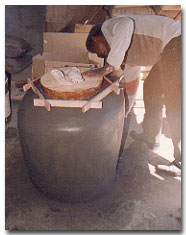The jar/container is made without steel or wire mesh. A sack filled with sand is used as a mould which is then plastered with a sand/cement mortar. When the mortar is hard, the sack and the sand are removed, leaving the container. The process is simple, easy to learn and uses the minimum of materials and equipment. You can make smaller containers if you wish, using the same process. Clicking on the tabs above will take you through a step by step method of how to make these jars. Below are pictures showing the production of a storage jar using the same procedures outlined in the step by step directions.
|
|
|
|
|
|
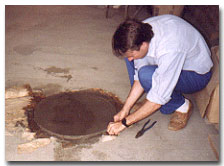 |
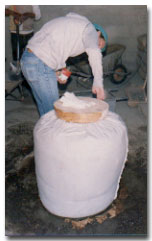
|
|
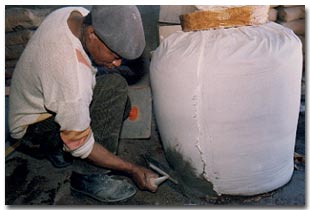
The sack mould is plastered with it's first coat.
|
|
|
|
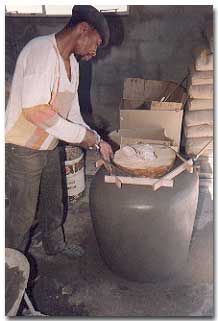
The space between the wooden
|
|
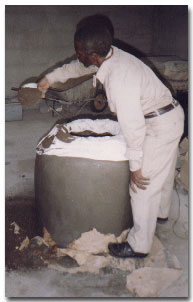
|
|
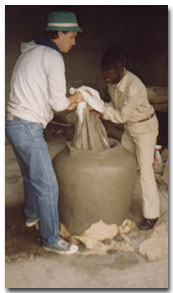
...then the |
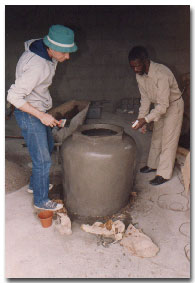
The jar is checked for |
| next page > | |
|
|
|
|
All rights reserved. No part of this web site may be reproduced or transmitted
| |
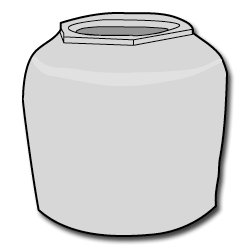 These web pages describe how to make containers or storage jars that have a capacity of 200 -250 litres (about 55 gallons) for the storage of water or grains, using only a 1/2 bag of cement and 50 kg of sand.
These web pages describe how to make containers or storage jars that have a capacity of 200 -250 litres (about 55 gallons) for the storage of water or grains, using only a 1/2 bag of cement and 50 kg of sand. 